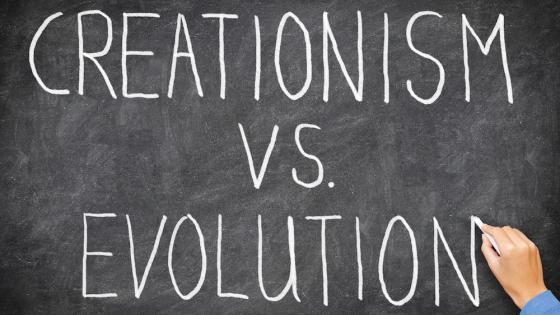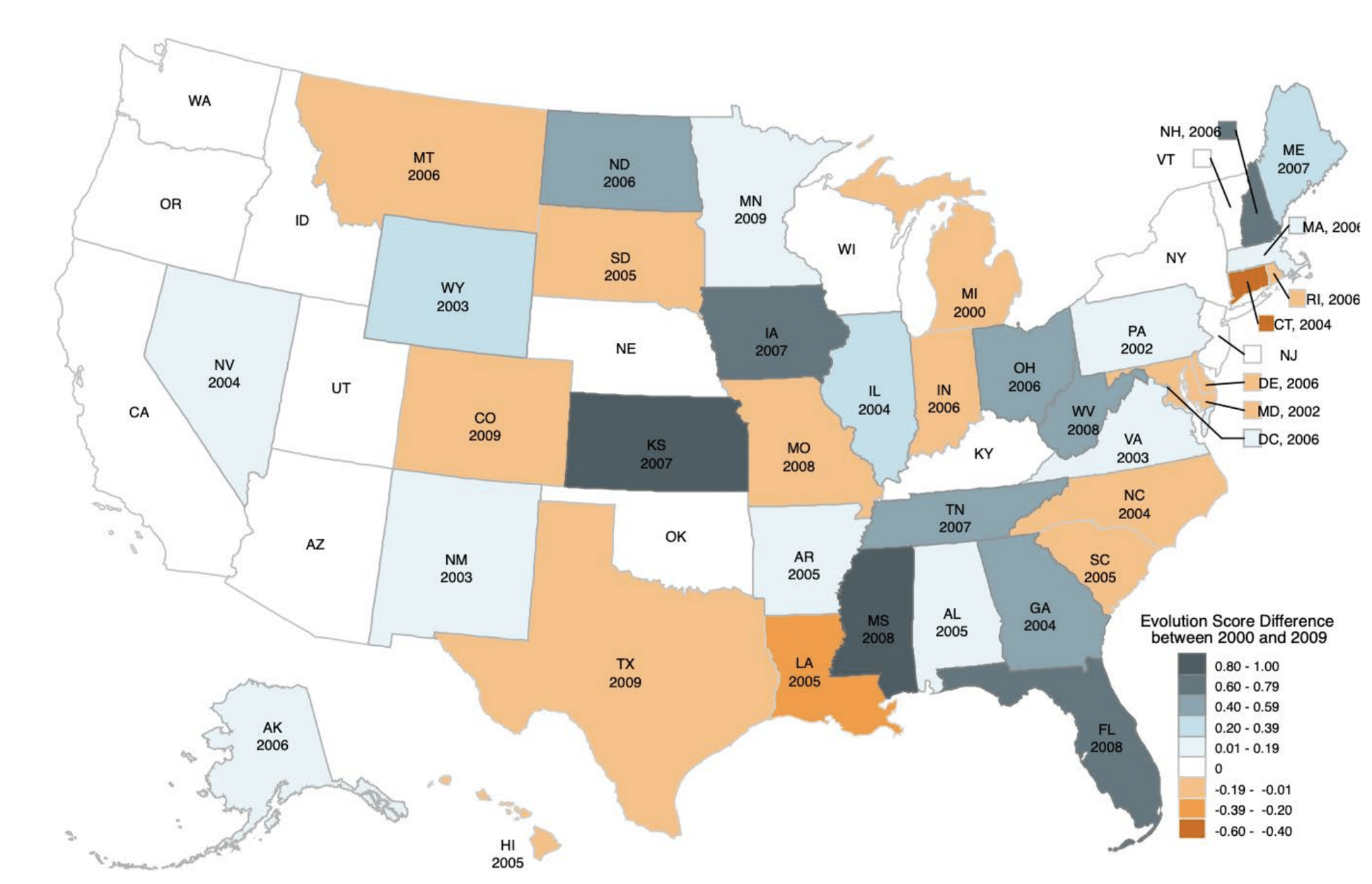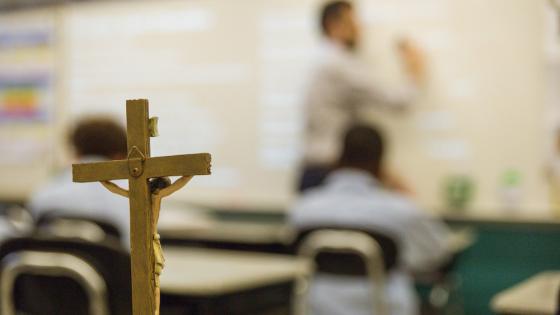Since the publication of Charles Darwin’s On the Origin of Species, in 1859, US policy makers have engaged in heated debates about whether the theory of evolution should be taught in public schools. At the beginning of the 20th century, teachers covering evolution in US schools faced strong opposition (Beale 1941). Some states, such as Tennessee, banned the coverage of evolution in public schools entirely. In the famous Scopes trial of 1925, John T. Scopes, a biology teacher from Tennessee, was convicted under the Butler Act of teaching evolution in the classroom (Numbers 1982). Legislative decisions in the second half of the 20th century gradually paved the way for widespread evolution teaching. In 1967, the Butler Act was revoked by Tennessee’s state legislators. Although this and further decisions gradually allowed for a more comprehensive teaching of evolution, there remains substantial variation across US states in the way evolution is covered in education standards.
But does teaching evolution make a difference to students? About 65% of the US population agrees with the statement that humans have evolved over time (Pew Research Center 2015). While the literature has identified factors such as parents (Bisin and Verdier 2001, Guiso et al. 2008, Tabellini 2008) and social networks (Sacerdote 2001, Bailey et al. 2020) as determinants of attitudes, I ask whether schools play a role in shaping scientific attitudes. More specifically, does evolution coverage in US education standards affect students’ attitudes towards evolution in adulthood? And does it also matter for students’ high-stakes life choices?
In a new paper (Arold 2022), I show that evolution teaching has lasting effects on students. Greater exposure to evolution teaching not only improves students’ knowledge about evolution by the end of high school, but also increases evolution belief in adulthood. What’s more, the reforms affect high-stakes life decisions, namely the probability of working in life sciences.
US reforms of evolution teaching
Estimating causal effects of school curricula is challenging, as they are not randomly assigned to students but largely reflect the population’s attitudes and beliefs. Therefore, simply matching students’ exposure to evolution teaching with their belief in evolution as adults is unlikely to yield the causal effect of interest here. To isolate the causal effect of evolution teaching, I exploit staggered state-level reforms of the evolution content in US State Science Education Standards. The predetermined timing of gubernatorial elections combined with the tenure of members of State Boards of Education create idiosyncrasies in the determination of the precise reform years. Beyond the theoretical argument that the timing of reform is determined by institutional idiosyncrasies, my two-way fixed effects approach explicitly accounts for a wide range of endogeneity concerns by comparing adjacent cohorts around sharp reforms of the education standards.
To conduct my set of analyses, I link state-level data on the evolution coverage in Science Standards with three individual-level datasets. The evolution coverage is measured by the “evolution score” constructed by Lerner (2000) and Mead and Mates (2009). The score ranges from zero to one with a higher score indicating a more comprehensive coverage of evolution. During the study period, from 2000 until 2009, 22 states increased the coverage of evolution in their education standards and 15 states reduced it (Figure 1).
Figure 1 US map of evolution score difference between 2000 and 2009
Note: Map depicts the evolution score difference, which is defined as the evolution score of 2009 minus the evolution score of 2000. A positive (negative) difference implies an increase (decrease) in the evolution score between 2000 and 2009, as indicated by blue (orange) colouring. White colouring indicates no change of the evolution score between 2000 and 2009. The years reported below the two-letter state codes mark the respective reform years. Source: Arold (2022), Lerner (2000), Mead and Mates (2009).
Reforms affect evolution knowledge in school
To test whether the evolution coverage in Science Standards affects what students learn about evolution in school, I use data from the National Assessment for Educational Progress (NAEP). This is a standardised student achievement test measuring US students’ knowledge across various subjects and topics. The NAEP test for science in grade 12 contains questions on evolution. I link the share of questions on evolution answered correctly by a given student to the evolution score that was in force in the state and year of her high school entry.
I find that students exposed to more comprehensive evolution coverage in high school are more likely to correctly answer knowledge questions on evolution by the end of high school, conditional on state and year fixed effects as well as individual-level controls. More specifically, a change in the evolution score from zero to one increases the share of evolution questions answered correctly by 5.8 percentage points (18% of sample mean). Given that scientific knowledge positively impacts earnings and economic growth (Lucas 1988, Barro 2001, Hanushek and Woessmann 2008, 2012), this finding is of direct economic importance.
Two additional results strengthen the causal claim of this analysis. First, an increase in evolution coverage is not related to students’ non-evolution scientific knowledge, which can be interpreted as a placebo test to detect general scientific confounders. Second, the reforms have no effect on the evolution knowledge of private school students for whom Science Standards have never been binding.
Effects translate into evolution belief in adulthood
Next, I examine whether the evaluated reforms have lasting effects on evolution beliefs in adulthood. To this end, I use data from the General Social Survey that asks a representative sample of US adults about their belief in evolution. It also elicits a wide range of further scientific, religious, and political attitudes. As the data also records the respondents’ year of birth and state of residence at age 16, I can approximate the year and state of high school entry and merge it with the corresponding evolution score.
I find that exposure to evolution teaching in school affects the probability of believing in the concept of evolution in adulthood. Relative to no coverage, extensive coverage of evolution increases the probability that a student believes in evolution in adulthood by 33.3 percentage points (57% of sample mean).
In contrast, I find no effect of evolution coverage on non-evolution scientific, religious, and political attitudes, lending empirical support to the interpretation that reform timing is not affected by scientific, religious, and political shocks. This finding complements studies of school curricula effects on economic and political attitudes in China (Cantoni et al. 2014), and on religious attitudes in Germany (Arold et al. 2022).
Reforms also affect high-stakes occupational choice
Lastly, I analyse whether the evaluated reforms affect high-stakes choices, namely occupational choice. I hypothesise that learning about evolution, the fundamental theory of life sciences, increases the probability of working in life sciences in adulthood. To measure how evolution teaching impacts occupational choice, I use data from the IPUMS American Community Survey (Ruggles et al. 2020), which contains detailed information on the occupational field of respondents as well as information on the state and year of birth.
I demonstrate that exposure to comprehensive evolution coverage compared to no evolution coverage increases the probability of working in life sciences in adulthood by 23% of the sample mean. This effect mostly comes from the subfield of biology, the subject in which evolution is typically taught. Supporting the empirical strategy, evolution teaching does not affect the probability of working in any non-scientific occupational field.
More generally, this finding suggests that science education can be used to attract future STEM workers, a central policy goal both in the US and in Europe (National Science and Technology Council 2018, European Commission 2020). Having more people work in STEM not only raises wages at the individual level (Hastings et al. 2013, Kirkeboen et al. 2016, Deming and Noray 2020), but also fosters innovation, enhances labour productivity, and stimulates economic growth (Griliches 1992, Jones 1995, Kerr and Lincoln 2010, Peri et al. 2015).
Implications for the US and beyond
The implications of these findings reach beyond evolution teaching in the US. First, the fact that education standards lastingly shape students’ beliefs even on a highly charged topic like evolution suggests effects might be even larger on less controversial topics. Second, the findings may also have bearing for other countries where teaching evolution is controversial, as in much of the Middle East. Overall, fostering scientific attitudes and attracting STEM workers through education may enhance the technological progress required to overcome some of the great challenges of our time.
Authors' note: Carl Philipp Braun provided excellent research assistance. All errors are my own.
References
Arold, B W (2022), “Evolution vs. Creationism in the Classroom: The Lasting Effects of Science Education”, Center for Law and Economics Working Paper Series, ETH Zurich.
Arold, B W, L Woessmann and L Zierow (2022), “Religious education in school affects students’ lives in the long run”, VoxEU.org, 3 March.
Bailey, M, D M Johnston, M Koenen, T Kuchler, D Russel and J Stroebel (2020), “Social Networks Shape Beliefs and Behavior: Evidence from Social Distancing During the COVID-19 Pandemic”, NBER Working Paper No. 28234.
Barro, R J (2001), “Human Capital and Growth”, American Economic Review 91(2): 12–17.
Beale, H K (1941), “A History of the Freedom of Teaching in American Schools”, Report of the Commission on Social Studies, part 16, Chicago: Charles Scribner & Sons.
Bisin, A and T Verdier (2001), “The Economics of Cultural Transmission and the Dynamics of Preferences”, Journal of Economic Theory 97(2): 298–319.
Cantoni, D, Y Chen, D Y Yang, N Yuchtman and J Zhang (2014), “Curriculum and Ideology”, VoxEU.org, 29 May.
Deming, D J and K Noray (2020), “Earnings Dynamics, Changing Job Skills, and STEM Careers”, Quarterly Journal of Economics 135(4): 1965–2005.
European Commission (2020), “European skills agenda for sustainable competitiveness, social fairness and resilience”, Publications Office of the European Union Luxembourg.
Griliches, Z (1992), “The Search for R&D Spillovers”, Scandinavian Journal of Economics 94: 29–47.
Guiso, L, P Sapienza and L Zingales (2008), “Social Capital as Good Culture”, Journal of the European Economic Association 6: 295–320.
Hanushek, E A and L Woessmann (2008), “The Role of Cognitive Skills in Economic Development”, Journal of Economic Literature 46(3): 607–668.
Hanushek, E A and L Woessmann (2012), “Do Better Schools Lead to More Growth? Cognitive Skills, Economic Outcomes, and Causation”, Journal of Economic Growth 17(4): 267–321.
Hastings, J S, C A Neilson and S D Zimmerman (2013), “Are Some Degrees Worth More than Others? Evidence from College Admission Cutoffs in Chile”, National Bureau of Economic Research Working Paper Series, No. 19241.
Jones, C I (1995), “R & D-Based Models of Economic Growth”, Journal of Political Economy 103(4): 759–784.
Kerr, W R and W F Lincoln (2010), “The Supply Side of Innovation: H- 1B Visa Reforms and U.S. Ethnic Invention”, Journal of Labor Economics 28(3): 473–508.
Kirkeboen, L J, E Leuven and M Mogstad (2016), “Field of Study, Earnings, and Self-Selection”, Quarterly Journal of Economics 131(3): 1057–1111.
Lerner, L S (2000), “Good and Bad Science in US Schools”, Nature 407(6802): 287–290.
Loveless, T (2021), Between the State and the Schoolhouse: Understanding the Failure of Common Core, Harvard Education Press.
Lucas, R E (1988), “On the Mechanics of Economic Development”, Journal of Monetary Economics 22(1): 3–42.
Mead, L and A Mates (2009), “Why Science Standards are Important to a Strong Science Curriculum and How States Measure Up”, Evolution: Education and Outreach 2, 359–371.
National Science and Technology Council (2018), “Charting a Course for Success: America’s Strategy for STEM Education”, Report by the Committee on STEM Education of the National Science and Technology Council.
Numbers, R L (1982), “Creationism in 20th-Century America”, Science 218(4572): 538–544.
Peri, G, K Shih and C Sparber (2014), “How highly educated immigrants raise native wages”, VoxEU.org, 29 May.
Pew Research Center (2015), Public and Scientists’ View on Science and Society, 29 January.
Ruggles, S, S Flood, R Goeken, J Grover, E Meyer, J Pacas and M Sobek (2020), “Integrated Public Use Microdata Series USA: Version 10.0 [dataset]”, Minneapolis, MN: IPUMS.
Sacerdote, B (2001), “Peer Effects with Random Assignment: Results for Dartmouth Roommates”, Quarterly Journal of Economics 116(2): 681–704.
Tabellini, G (2008), “The Scope of Cooperation: Values and Incentives”, Quarterly Journal of Economics 123(3): 905–950.



